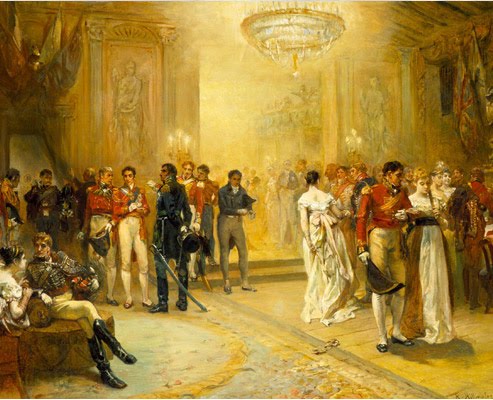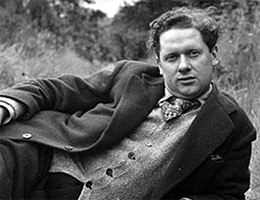Robert Browning was an English poet and playwright whose mastery of the dramatic monologue made him one of the foremost Victorian poets. His poems are known for their irony, characterization, dark humour, social commentary, historical settings, challenging vocabulary and syntax.Browning’s early career began promisingly but was not a success. The long poem Pauline brought him to the attention of Dante Gabriel Rossetti and was followed by Paracelsus, which was praised by Wordsworth and Dickens, but in 1840 the difficult Sordello, which was seen as wilfully obscure, brought his poetry into disrepute.
The Last Ride Together by Robert Browning is a monologue of a rejected lover exploring the end of a love affair. The title suggests the last ride that the lover has spent with his love. However, the poet wants to convey through the narrator that rather than feeling sad about the end, he should be happy for the love that he underwent and which remains in his memory.
Summary of The Last Ride Together by Robert Browning
The first stanza presents a self-consolation. It’s based on the underlying theory of ‘blame it all on fate’. Of course, the poem talks about love and its attendant failures. The speaker thinks that failure is inevitable as he himself has failed. He is attempting to reduce his pain by trying to curtail his desires. Words are so chosen to convey the feeling of polite resignation and acceptance of defeat. The word ‘since’ is used five times in the same paragraph which in one hand may indicate to the fact that Browning got involved in an emotional flow and lost control over his poetic polish of words.
Moreover, the diction is superficial, and of superhuman psychology, because a man who has been ditched can’t have too many good things to say about the former flame unless of course, he is ironical about it. Generally, browning though a Dramatic Monologist is one of the most profound lyricists which can be determined by the rhyme scheme – aa, bb, ca, bb, c and the predominant rhythm i.e. iambic pentameter. In fact, the whole paragraph is rhetorical.
The second stanza deals with the anticipation of a response by the speaker from the mistress. It is this dilemma and waits for the answer that contributes to the dramatic effect of the poem. The stanza progresses thus – from spine chilling excitement and anticipation to joy to relief and finally to ecstasy. The images of the mistress bending her brow, her “deep dark eyes”, her breathing and consequent heaving of the bosom and her blush conveys an almost erotic charm to the poem. In a superb metaphor – “With life or death in the balance”. The speaker compares yes with life and no with death. Rhythm and rhyme add a lyrical charm to the dramatic poem.
The diction provides a picture of the action in the man with which Browning was more concerned. It clearly brings out the anxiety and the emotional turmoil in the speaker’s brain. Words like – ‘bent that brow’ refers to the brooding of the lady over the proposal. ‘Fixed’ and ‘breathing’ clearly brings out the anxiety of the speaker. The condition of ‘yes and ‘no’ has been beautifully painted as ‘life’ and ‘death’ respectively. The stanza could also be memorable for the line – “Who knows but the world may end tonight”. This line affirms the stupid optimism of the speaker who becomes as a much a butt of ridicule as the people he satirizes for their failures.
The third stanza deals with the beautiful feeling that follows after being with one’s beloved the feeling of being on the top of the world after achieving one’s goal. It also deals with the more physical part of love. The tone is of being overwhelmed in love in which everything is blessed –
“. . . benediction. . . /and . . . at once”.
Towards the end, however, the tone becomes sensual in aspect. The sky of the first four lines is studded with the stars of imageries. The ‘billowy bosomed benediction’ not only brings out a crisp alliteration but also a half personification. The image of a sort of physical if not sexual love comes to our minds by few lines and words like:
“Conscious . . . drew”,
“down on you . . . near”,
“. . . learnt she. . .“,
“Thus . . . breast”.
The mistress has provided him with more than asked for. The words chosen have created or the words were deliberately chosen to create a calming effect like ‘hush!’, ‘passion drew’, ’fade’, ‘lingered’ which are in tune with theme and tone of the paragraph. Yet the rhythm is itself uncertain which gives the poem its characteristic dramtic tinge.
The next stanza provides us with a touch of Browning’s philosophy. Dealing with the present and stop being bothered by the past. The tone of the poem presents a mix of consolatory and philosophical musings. With the “fluttering in the wind” metaphor, the speaker compares the soul with a long-cramped scroll. In itself, it is a fresh metaphor unparalleled in literature. Though the paragraph is simply composed, the line numbers 35 and 36 express the poet’s genius of moulding ideas into words, and thoughts into language:
“. . ., my soul
Smoothed . . . scroll
Freshening . . . wind.”
Again the stanza doesn’t give us a proper rhythm which acts similar to the last stanza.
Next stanza contains little of artistic or dramatic techniques but more of philosophical elements. The theory of failure is introduced. In order to hide his agony, he deliberately compares himself with those people who had failed in their lives but not with those who have achieved the zenith. It’s a mere acceptance of defeat and on untrue optimism of better chance in future life (heaven). The word ‘hope’ used twice which adds up to the three ‘hopes’ used before; this suggests the disappointment behind the hope cause we speak of a truth only once but we keep on repeating the lie to make it true.
Next stanza presents the philosophical idea that the life of contemplation in love is far greater than the material world. The words to look for in the stanza are – ‘fleshly’, ‘screen’, ‘bosom heave’, ‘many a crown’, ‘heap of bones’. These words do signify the sensuous markers of the poem. The humour is brought back into the poem by the line –
“Ten lines . . . “.
The stanza deals with the continuity of dreams into reality. The gulf between imagination and creation is shortened. It also deals with the comparison of the life of a statesman and soldier with the life and achievement of a lover and puts the lover and his momentary triumph over the achievements of the statesman and soldier.
The speaker’s tone is self-congratulatory because nobody else congratulates him for having the last ride with his beloved. The tone is that of the justification of one’s failure, the tone is of giving a lame excuse. The first four lines are rhetorically interrogational, with a zeugma in line number 56(economising the poem hence making it compact), and a synecdoche in line number 61. The diction is very much pregnant with ideas and suggestions.
The words in the beginning of the stanza marches ahead with swords and banners of questions but suddenly halts for the poet to synchronised this stanza with the other ones rhythmically inserts a line that doesn’t seem to be in line with the marching tone of the four previous lines, however, after further scrutinizing we can see that the idea which the line suggests is that the speaker has united his thought and action but the line certainly breaks the rhythm of the stanza and which adds to the disadvantage of the poem. The diction is otherwise straightforward and clearly brings out the idea which the speaker wants to convey.
The next two stanzas both love and life are painstakingly proven to be better than art, poetry. The last two stanzas waxes metaphysical and almost borders on obscurity
Critical Analysis of the Last Ride Together:
This poem is witness to the fact that the outstanding thing about Browning as an artist the variety and originality of his poetic forms. Browning may be described as “the father of modern experimental verse.” It is Browning’s love of realism which makes him give a hearing even to a rascal as the lover is. Prisoners, cheats, murderers are all given a hearing. But these characters are never given any name. So that they could be generalised.
As Chesterton says, Browning does not take up ordinary situations or obvious morals. He rather shows us the crisis of the life of the individual may depend on his reaction to it. Again and again, Browning selects and holds out into clear relief the important moment which decides the spiritual basis of the soul involved and settles the pattern of its future existence. In The Last Ride Together Browning selected the ‘moment’ which is the result of quick thought or sudden passion and results in some action breaking the commonplace course of life.
According to K.C. Chakraborty, “Browning’s love poems are seldom a simple lyrical cry.” Browning is never so carried away as to forget everythi8ng else in love. He is not a poet of passions but of the psychology of passion. His lovers dissect and analyse their passion. The lover in The Last Ride Together thinks less of the lady and more of the abstract problem ‘what is the real success of life?’ browning does not portray love as that all-absorbing and exclusive emotion which drives out all thoughts except those of the beloved. His really passionate love poem is very rare in his poetry. His passion is intellectual and psychological. He firmly believes, “The emotion of love is always intertwined with the grave question of life and conduct.” Here he doesn’t insist on beauty as a factor in sexual attraction.
His poems convey a little impression of the personal beauty of the woman. Generally, he tells us what love does. Browning considered that love was a supreme possession in itself, irrespective of success or failure. One may win or one may lose one’s love but it matters if one has understood what love is. Elton says. “Browning considered that love is not only man’s chief happiness but his chief ordeal.” This poem like most of his poems deals with love unsuccessful than with successful love. Love in the moment, the jealousy in love, the lost love, the love that is a mirage – all are taken up by Browning.
The first few stanzas of the poem show the perfection of the dramatic monologue Browning was a great artist, incomparably greater than his more popular contemporary. His love poems and imaginative representation are in this form. Dramatic monologue is an exacting form and requires great skill. It has to tell a story and that too not at great length. The character of the speaker must be portrayed distinctly and vividly and should be dramatically appropriate to the theme. The thought of the poem should appear as a natural expression of the characters. Browning loves to work on the “great moment” but the movement in the monologues is not through action but in thought.
This monologue too shows Browning’s knowledge of human nature, specially its dark recesses and pit falls. The more tangled the character, the more passionate and stormy the experience, the more labyrinthine the story, the greater was the zest with which Browning approached them. Cazamian calls his monologues “studies in practical psychology.” His characters of dramatic monologue are like the character of Shaw, only expressing the writer’s ideas. One can even say that Browning’s poems are a poetry of ideas. Browning’s characters are Browningesque (since they speak Browning’s ideas).
However, his love of ideas prevents him from being fully dramatic. We feel that perhaps his,
“. . . purpose in creating characters was to make them serve as question, objectors, answers in the great debate that proceeds throughout his poems.”
Broadly speaking we might divide Browning’s character in two categories: those in whom intellect is predominant and those in whom lofty emotions are predominant. He is more successful in presenting women characters rather than men yet he doesn’t romantically idealise women. They are presented as acting and reacting in varied circumstances, pleasant and unpleasant. Like Shakespeare and Meredith, he represents them as possessing a finer and stronger intellect than men.
Robert Browning’s poetry is regarded as the finest love poetry. His poems deal with the emotions of love. His philosophy of love is an important part of his philosophy of life.
Go through the Solved Questions
Theme and Central Idea of ‘The Last Ride Together’ by Robert Browning
Some online learning platforms provide certifications, while others are designed to simply grow your skills in your personal and professional life. Including Masterclass and Coursera, here are our recommendations for the best online learning platforms you can sign up for today.
The 7 Best Online Learning Platforms of 2022
- Best Overall: Coursera
- Best for Niche Topics: Udemy
- Best for Creative Fields: Skillshare
- Best for Celebrity Lessons: MasterClass
- Best for STEM: EdX
- Best for Career Building: Udacity
- Best for Data Learning: Pluralsight

















Can u provode notes for ISC collection of essays.
I liked it but you must update as ISC syllabus for poems has been changed.
What kind of change rahul… Plz send me a reply ??
I liked the notes and analysis of the poem the last ride together thank you
this is good fr ISC syllabus but u should update new ideas
Plzz provide a detailed information of poem mending wall
the summary is faulty.
the use of word ‘since’ so many times is show the internal turmoil and hopelessness which the speaker is having after being rejected. how can someone say that browning is carried away and got careless?
in the later part of the poem, he tries to prove that many people who are considered successful are in reality not so successful if their conditions are scrutinized. in fact he proves it. the poet, sculptor and musicians may be great in art, but when art meets life, life wins. similarly, in most cases, one line is really enough to describe the life of a statesman as they are forgotten within a month of their resignation from public eye. similarly, the soldiers are forgotten by the state for which they fight and sacrifice. they really dont gain anything.
when we are describing the work of a great poet, we dont prove our smartness by criticizing the person. we only show our mental blockage and lack of understanding power.
Nice one my friend. I am taking your point for my exam. I believe in what youve said.
if uh know better than them start your own page asshole
Plz do not use filthy languages over here ..after all it reflects ur picture
wow i really liked it –
what is robert browning’s philosophy of love expressed in this poem
I see this one as a very chivalrous kind of love. In a sence he lets her go…does not force her to stay with him. In fact he dies not even show his frustration. He is a true lover.
Robert browing presents this man in the poem to help us understand the notion of love. He wants to convey that we come across many relationships in life…some last and some dont. But we should be brave enough to confrunt it and cherish those memories without any hard feelings.
true and very exact! i also feel the same thing
He does not die!
Refreshing…. And very interesting…
Plzz..Always provide me some information ..Thanks
These notes are really very helpful for an instant glance also for teachers. It should be a little more detailed.
thanx !!!
nishnit ji so nice comment………
Your notes on all the poems are awesome….but in the case of ‘Last Ride Together’ ….they are not at all helpful for exams…. 🙁
I agree or probably the poetry isn’t interesting and too long
This poem is an optimism to a fallen heart.The lines “fail i alone in words and deeds?”/why all man strive and who succeeds?” are really optimal and when a reader reads these lines he must be enlivened with a feeling of hopefulness.This is because of finding himself in the failure of others and he finds new life in himself.
The speaker/lover want to have sex. His plea to his beloves is to have sex one last time. That’s what the poem is about. In Victorian era it was normal for men to have both a wife and a mistress (“my mistress”). “near and yet more near,”-reaching the climax moment. “Till flesh must fade for heaven was here! “-hymen breaking. “What will but felt the fleshy screen”-hymen agaim. “We ride and i ee her bossom heave”- she is tired or breathing heavily. “I sink back shuddering from the quest”- he’s tired.
very nice poem’s summry